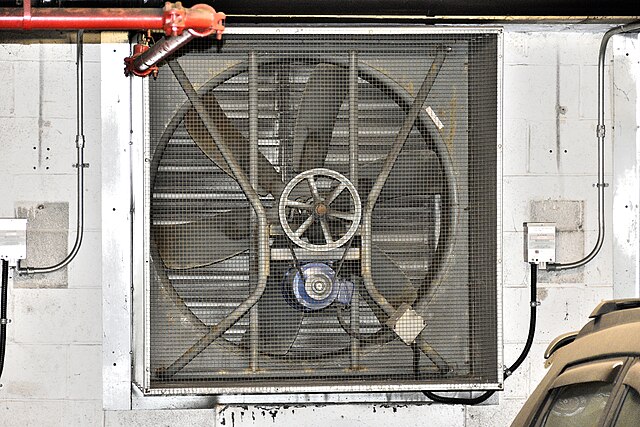A fume hood is a type of local exhaust ventilation device that is designed to limit exposure to hazardous or toxic fumes, vapors or dusts. The device is an enclosure with a movable sash window on one side that traps and exhausts gases and particulates either out of the area or back into the room, and is most frequently used in laboratory settings.
A common modern ducted fume hood
Wooden fume hood at Gdansk University of Technology (2016 picture of 1904 installation still in use)
Glovebox with inert gas purification system
A ducted fume hood manufactured by TION Global
Ventilation (architecture)
Ventilation is the intentional introduction of outdoor air into a space. Ventilation is mainly used to control indoor air quality by diluting and displacing indoor pollutants; it can also be used to control indoor temperature, humidity, and air motion to benefit thermal comfort, satisfaction with other aspects of the indoor environment, or other objectives.
An ab anbar (water reservoir) with double domes and windcatchers (openings near the top of the towers) in the central desert city of Naeen, Iran. Windcatchers are a form of natural ventilation.
An axial belt-drive exhaust fan serving an underground car park. This exhaust fan's operation is interlocked with the concentration of contaminants emitted by internal combustion engines.
The Central Tower of the Palace of Westminster. This octagonal spire was for ventilation purposes, in the more complex system imposed by Reid on Barry, in which it was to draw air out of the Palace. The design was for the aesthetic disguise of its function.







